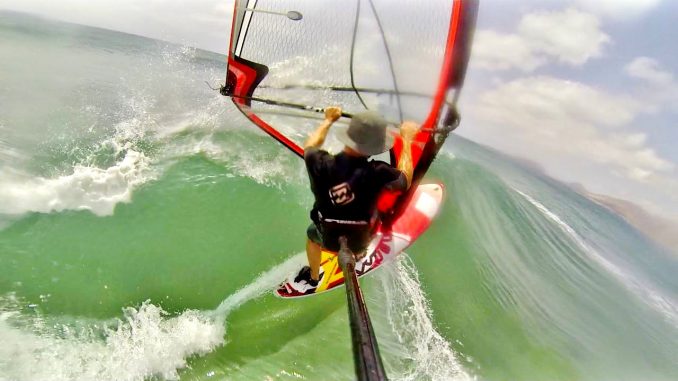
Words: Mark Dowson
Pics: Mark Dowson, Steve Thorp, Steve Laddiman
The windsurfing selfie seems to be synonymous with the GoPro action cam fish-eye type shot and it is pure Marmite, in so much as people seem to either love them or hate them (especially long, long videos). Personally, I’m firmly in the ‘love ‘em’ camp, and this is why…
It’s a creative challenge to get that unusual or perfect shot, just like the windsurfing journey of gaining skills and experience. Changing the angles, camera resolutions, light conditions, different mounting points and systems. It’s exciting when after many, many attempts you get something special. Something to use as your screen saver, or to simply post on Facebook and share a really special session with your mates. POV selfies also serve to record the sport you love for fireside reminiscing along with phrases such as, ‘Eeeh when I were a lad..’, or perhaps not. (POV cams have also revolutionised action sports media. They offer a great way to gain necessary on water shots during equipment testing. Here at Windsurfing UK, and over at our sister publication, SUP Mag UK, we use action cams extensively – ed).
Secondly I have found it invaluable in analysing my own personal technique (or lack of), especially the ‘frame by frame type’. Looking really carefully and considering body, hand and leg positions I have found myself understanding, and dare I say performance has been taken even further after looking through footage with a coach. I prefer to set the camera on video and then use the GoPro software to extract both the selfie shot and make smaller clips for movies and technique analysis.
Initially, when I first began, I focused mainly on jumping shots – back loop and forward loops. More recently I have started to obsess over getting better wave riding images. For me the challenge is still there, so typical with windsurfing, there’s a lot of room for personal improvement and trying to get a decent top turn image with some spray or an aerial would be jolly nice.
One of the people who ‘snaps’ a consistently high quality ‘windsurfing selfie’ is K4 fins owner/Ezzy team rider Steve Thorp. His high level of sailing obviously helps here but he has also introduced an innovative new clip and harness mount, which I have been lucky enough to use recently. This nifty bit of kit attaches to any harness in seconds and removes the need for holes to be drilled as per the first type. Another advantage to this update is the large back plate, which also makes the camera much steadier. A little more care does need to be taken whilst water starting for example, as the extension can catch on the mast, but otherwise it’s surprisingly easy to get used to wearing. I often wondered what people were looking at as I walked down the beach after returning from a session having forgotten I was wearing it. To the onlooker we appear to have a remote control aerial fitted to our behinds!
During a recent trip we were lucky to score some sun, wind and waves this spring and the shots were taken at Redcar using the new K4 harness mount. Steve has used the clone tool in Photoshop to remove the carbon pole in some images which makes them look all the sweeter.
Another mount used often by us windsurfers is the Flymount – a heavy duty and quality made bit of kit that grips the mast like stink (or any cylindrical ‘pole’). The angle of the Flymount is usually looking straight down, it is easy to use and, for me at least, has provided the most useful technique footage. I know those who use them attached to stand up paddle shafts as well, which with a bit experimenting can also yield great shots – especially in surf (we concur – ed). FHot produce a really nice mast mount – perhaps on my next trip I’ll persuade Gump from Juice Boardsports to lend me his. You never know, I might just get that perfect shot!
So what other land-based sefie options are there? A low tech solution I learnt from Nejc, a Slovenian windsurfing friend of mine, is to hide a DSLR or camcorder either in the car (under a carefully draped towel) or even on the beach (hidden by a rock or two) to capture the action. Using this method we’ve gained some interesting shots over the years. The only downside is your valuable camera could be nabbed!
The emerging land-based high-tech solutions have given us the various incarnations of the Soloshot; a ‘robot’ mounted on a tripod. I have the first version but the tech didn’t quite deliver and I got better footage from simply focussing the camera on the wave section I knew I’d ride. I’m waiting to see how the third version performs…And they’re pricey!
The future, however, looks exciting with ‘follow me’ drone technology maturing, but again I don’t intend to be an early adopter. I think I’ll stick with my proven and trusty GoPro for now. These kit mounted solutions have become part of my sailing routine and while some say they add unnecessary weight I find it’s easy to get used to.
Of course you cannot beat having your mate take proper shots from the beach with a decent DSLR. This long shot photos of Steve Thorp were taken by Steve Laddiman on our recent day trip and look cracking. But I’m still a fan of the up close and personal GoPro shot and in most instances will be the ‘go to’ choice for nearly everyone as hooking up with a good photographer, during a decent forecast, is pretty hard!
So good luck in nailing your own ultimate windsurfing selfies and I hope you get as much enjoyment out of them as I have!
Sefie GoPro tips:
- Keep the lens clean! Dip in the water frequently to remove droplets, use saliva or a Rainex type product on the outside lens.
- Keep the inside lens housing clean! And be careful not to let any moisture get inside.
- Wait for the best light – sunshine and blue skies deliver better results.
- Enjoy experimenting with different mounts and camera angles.
- Always use some form of leash onto both the camera and mount.
- To get the ultimate shot you may find ‘over riding’ or accentuating your movements is a way to capture dynamic images. It’ll also make you think about technique.
- If sailing in waves then be aware the wide angle lens of GoPro does tend to flatten conditions. Therefore choose the biggest set and go for it!
- Learn to edit your shots. You don’t need high end software such as Photoshop either. Simple editing software will do the job just fine.
Thanks to Juice Boardsports, Steve Thorp and K4 Fins, Steve Laddiman and Flymount.
See some of Mark’s GoPro windsurfing video footage by hitting these links –

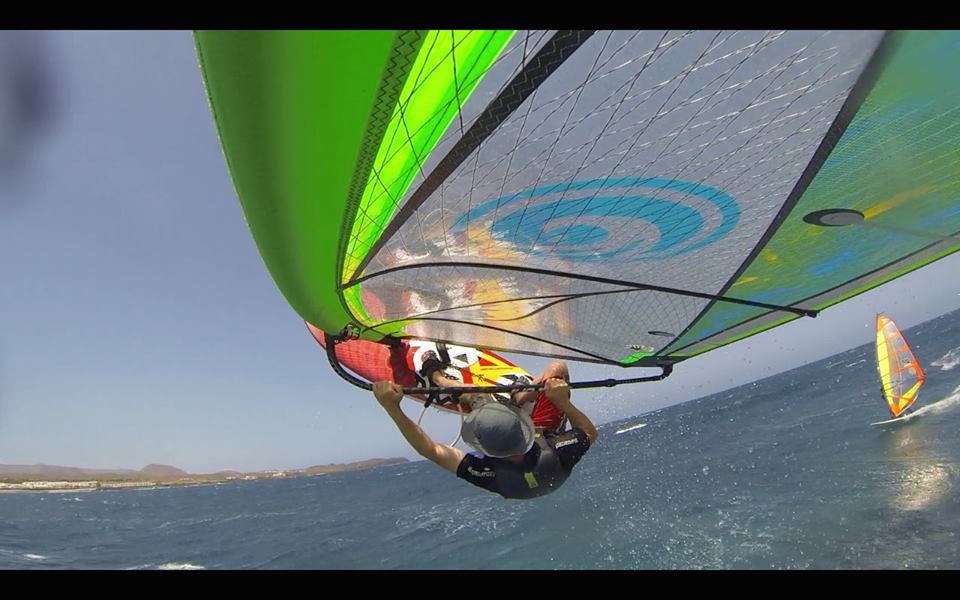
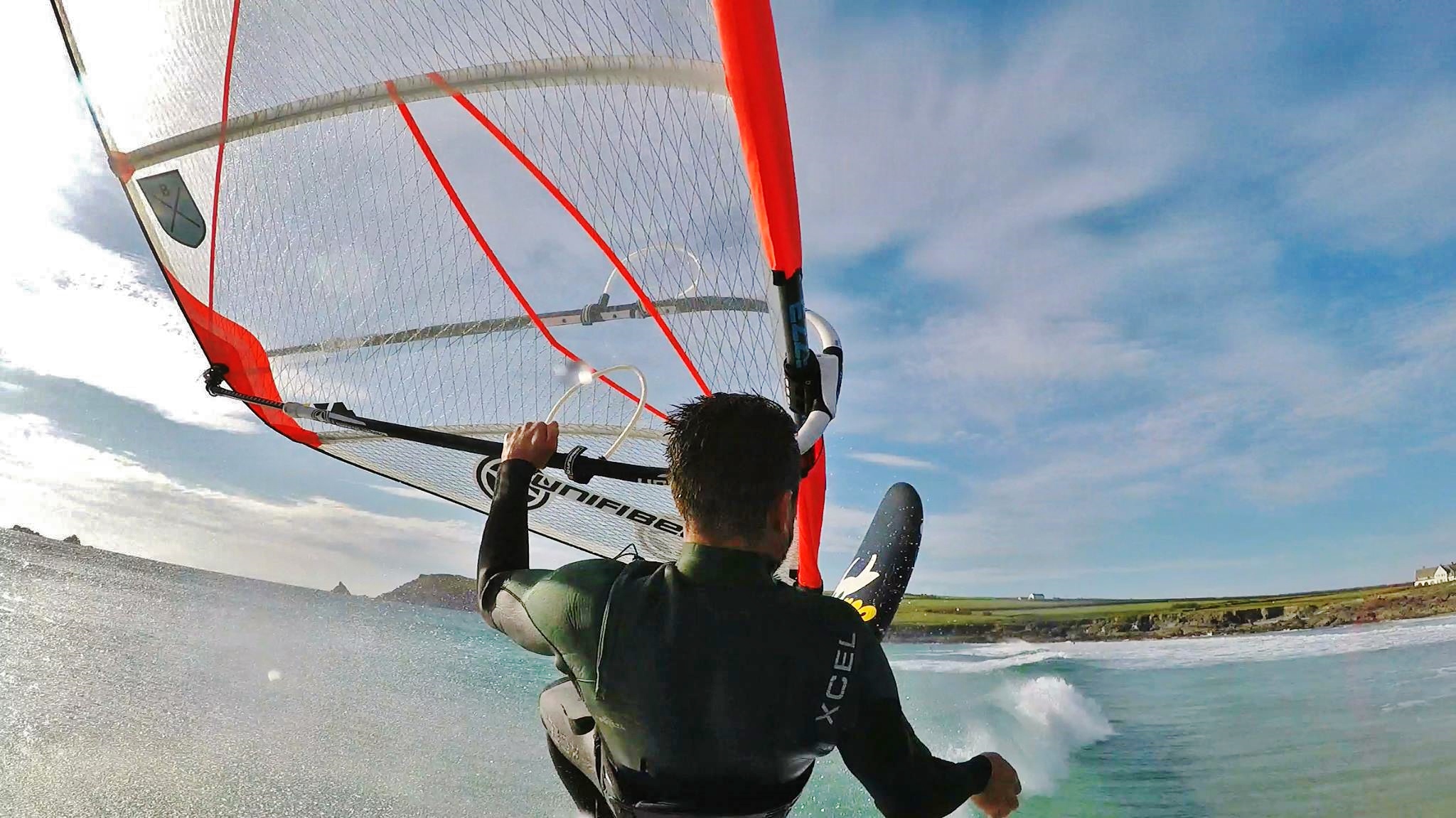
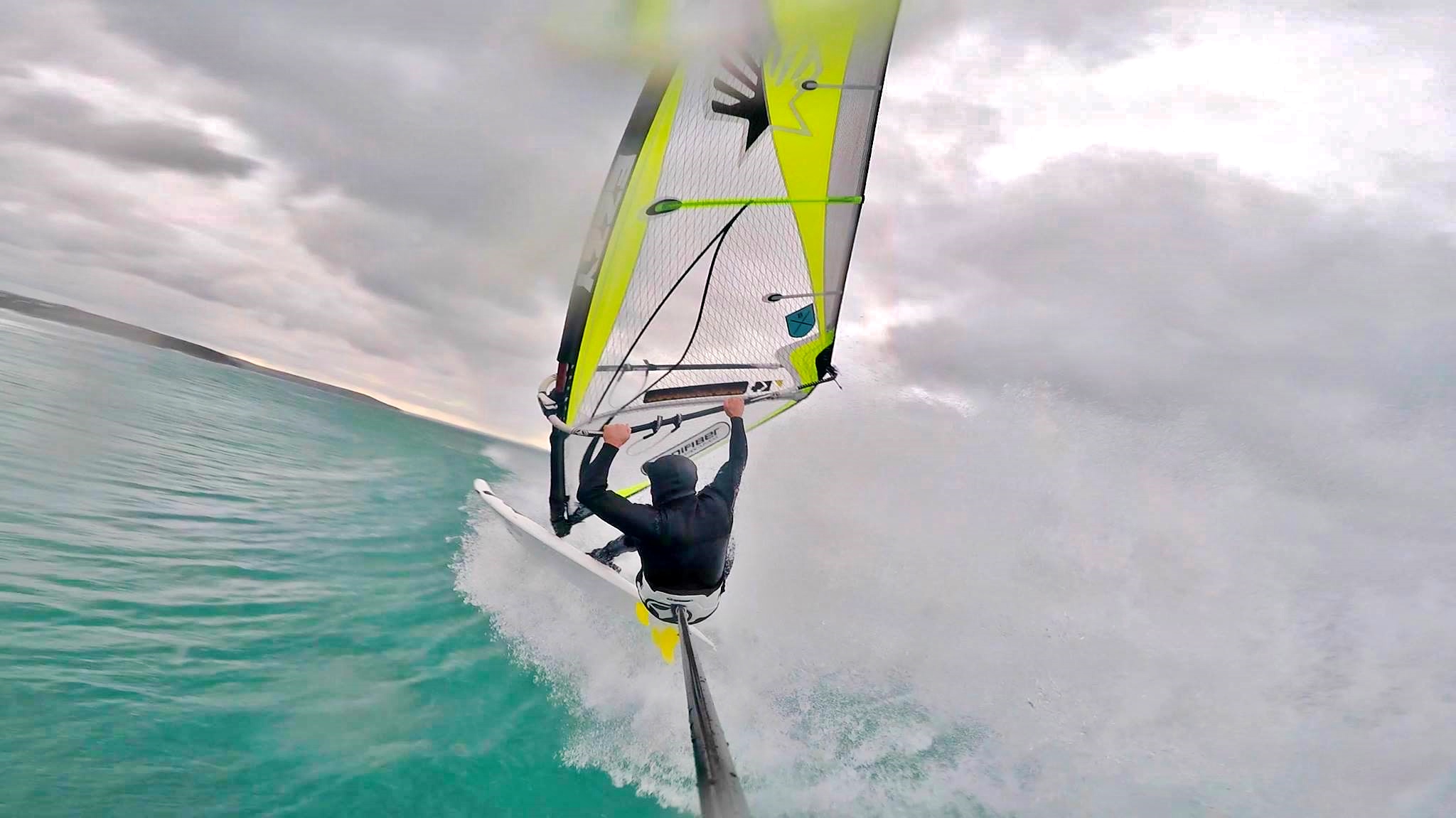
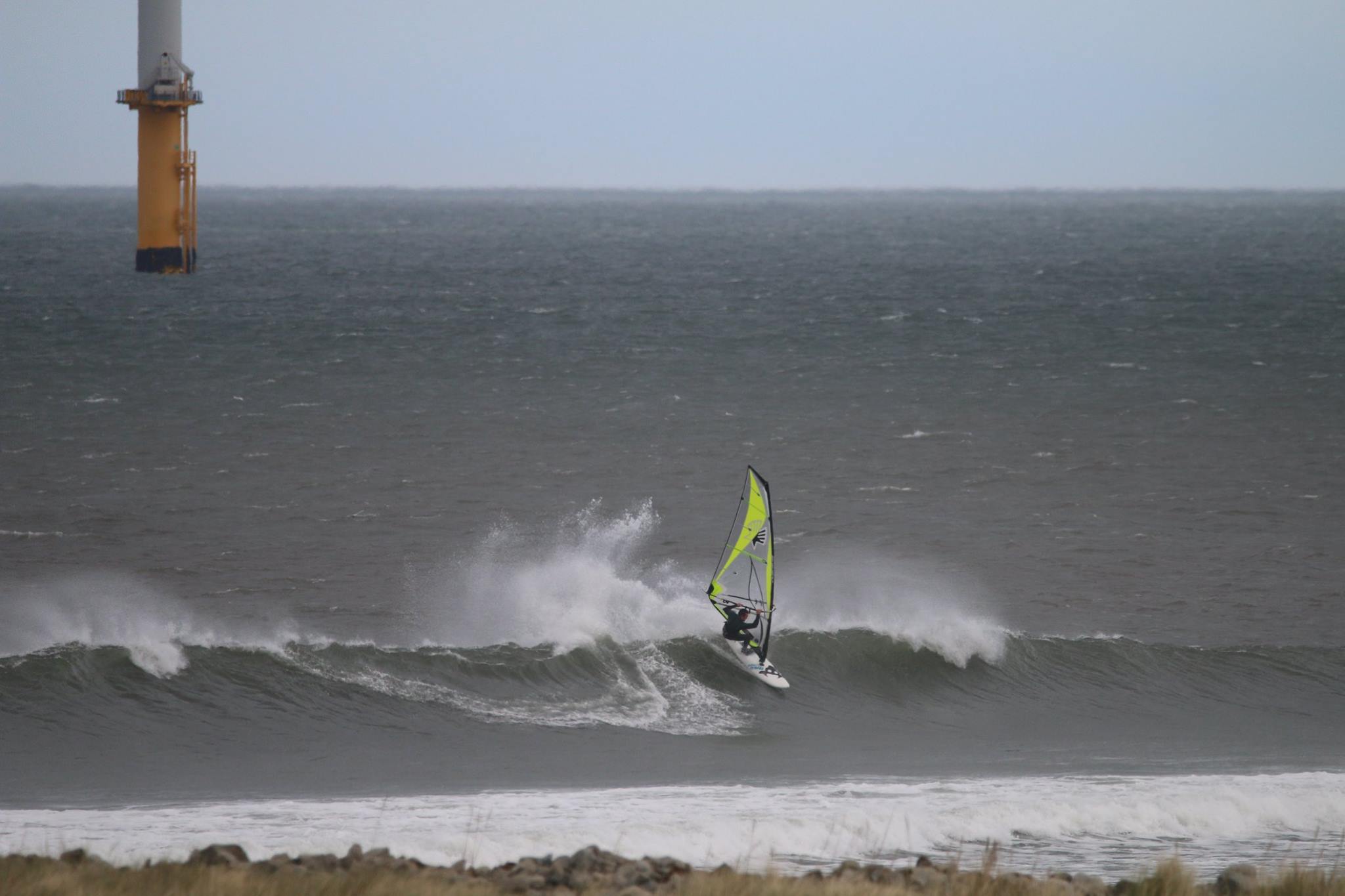
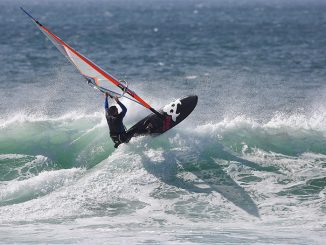
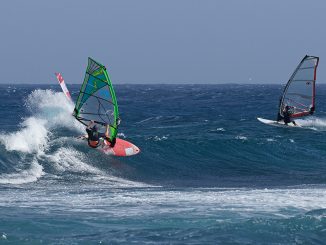
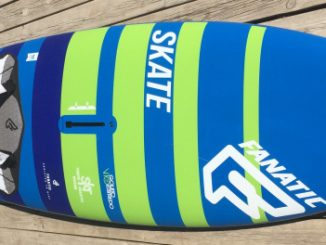
Leave a Reply